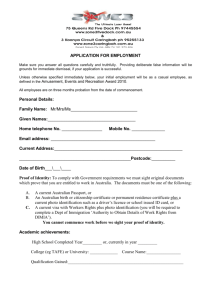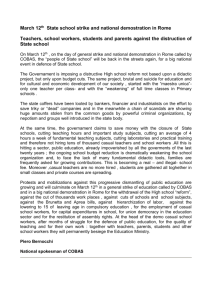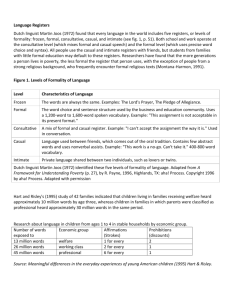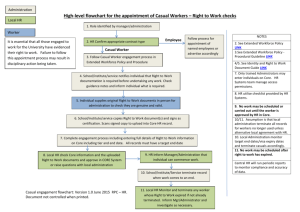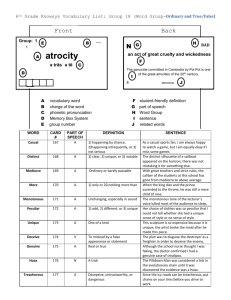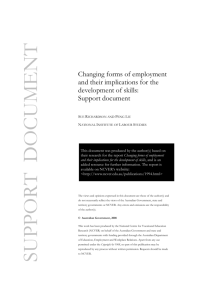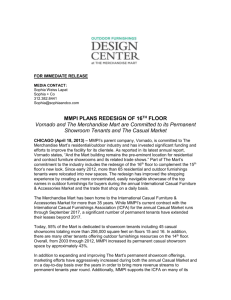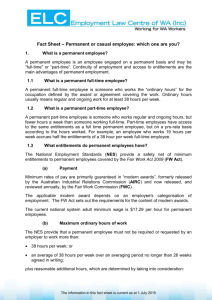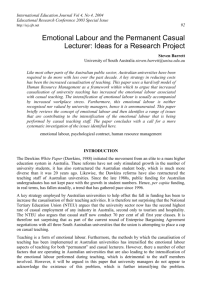Classroom Guidance for Week of October 15th – 19th
advertisement
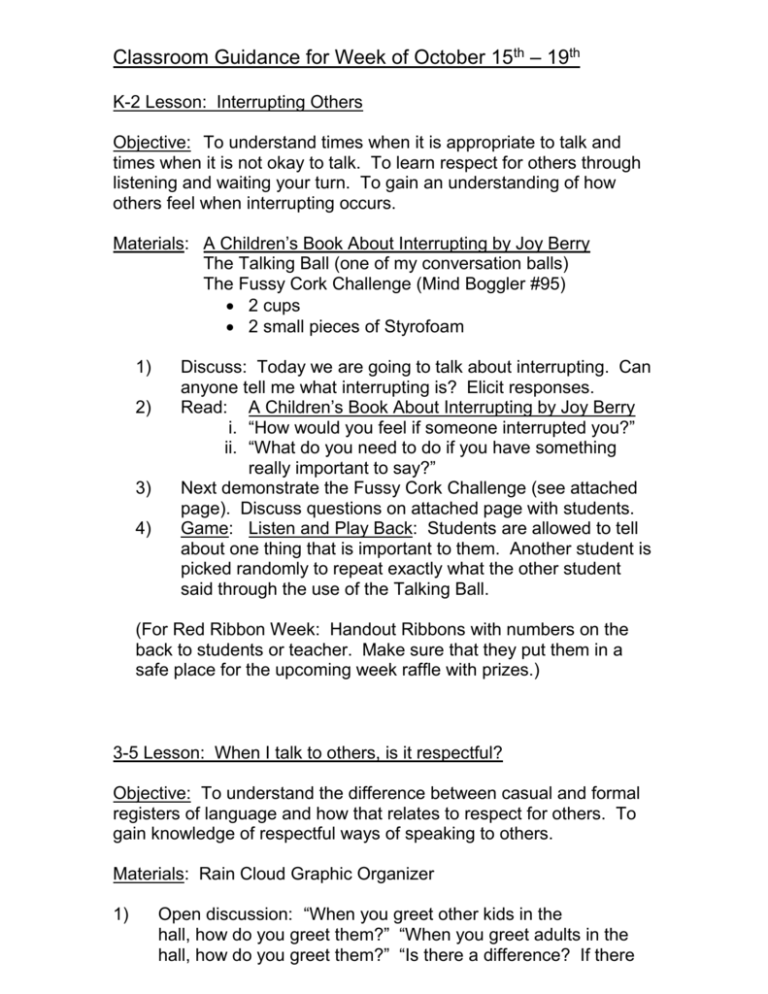
Classroom Guidance for Week of October 15th – 19th K-2 Lesson: Interrupting Others Objective: To understand times when it is appropriate to talk and times when it is not okay to talk. To learn respect for others through listening and waiting your turn. To gain an understanding of how others feel when interrupting occurs. Materials: A Children’s Book About Interrupting by Joy Berry The Talking Ball (one of my conversation balls) The Fussy Cork Challenge (Mind Boggler #95) 2 cups 2 small pieces of Styrofoam 1) 2) 3) 4) Discuss: Today we are going to talk about interrupting. Can anyone tell me what interrupting is? Elicit responses. Read: A Children’s Book About Interrupting by Joy Berry i. “How would you feel if someone interrupted you?” ii. “What do you need to do if you have something really important to say?” Next demonstrate the Fussy Cork Challenge (see attached page). Discuss questions on attached page with students. Game: Listen and Play Back: Students are allowed to tell about one thing that is important to them. Another student is picked randomly to repeat exactly what the other student said through the use of the Talking Ball. (For Red Ribbon Week: Handout Ribbons with numbers on the back to students or teacher. Make sure that they put them in a safe place for the upcoming week raffle with prizes.) 3-5 Lesson: When I talk to others, is it respectful? Objective: To understand the difference between casual and formal registers of language and how that relates to respect for others. To gain knowledge of respectful ways of speaking to others. Materials: Rain Cloud Graphic Organizer 1) Open discussion: “When you greet other kids in the hall, how do you greet them?” “When you greet adults in the hall, how do you greet them?” “Is there a difference? If there 2) 3) 4) 5) 6) is, what is it?” Allow for time between each response for discussion. Say, “Respect is something that everyone deserves, but not everyone knows how to give it when they speak. You may talk to your friends differently than you would talk to an adult. Some of you may not. Let’s explore the differences.” Write Casual Talk and Formal Talk on the board in two different columns. Explain the difference between casual talk and formal talk: i. Casual talk: Used between friends and is often in incomplete sentences. Depends a lot on the expression of your face or body. (Ex. “What up dawg?") ii. Formal talk: Used in school and work. Has complete sentences and word choice is important. (Ex. “How are you today, Mr. Smith?”) Under the Casual Talk column, write the sentence, “Yo, man, check this out, Mr. Smith.” Then invite students from the class to come up and role play what could have been said for the above sentence. Write all appropriate responses in the Formal Talk column. Then write in the casual talk column, “I, like, totally nailed it on the first try dude!” Again invite more students to role play appropriate responses. Then, handout: Rain Cloud Graphic Organizer worksheet. Say, “In groups, pick a favorite Casual Talk saying that at least one of you has heard. Then, for each raindrop, write one Formal Talk saying to replace the above Casual Talk saying. Give an example on the board. Allow 5-7 minutes to complete. Ask one person from each group to share responses when finished. Ask the class, “What could be the consequences of using casual talk when speaking to a teacher, parent, or other adult? What could an adult think about you if you did not use formal talk with him or her?” Elicit responses. Process: “What did you learn about yourself from this activity? How could knowing when to use the right kind of talk be helpful to you?” (For Red Ribbon Week: Handout Ribbons with numbers on the back to students. Make sure that they put them in a safe place for the upcoming week raffle with prizes.) (Modified from parent training lesson regarding Language Development: Changing the Way We Do Business In The Village Through Parent/Family Involvement Workbook)
